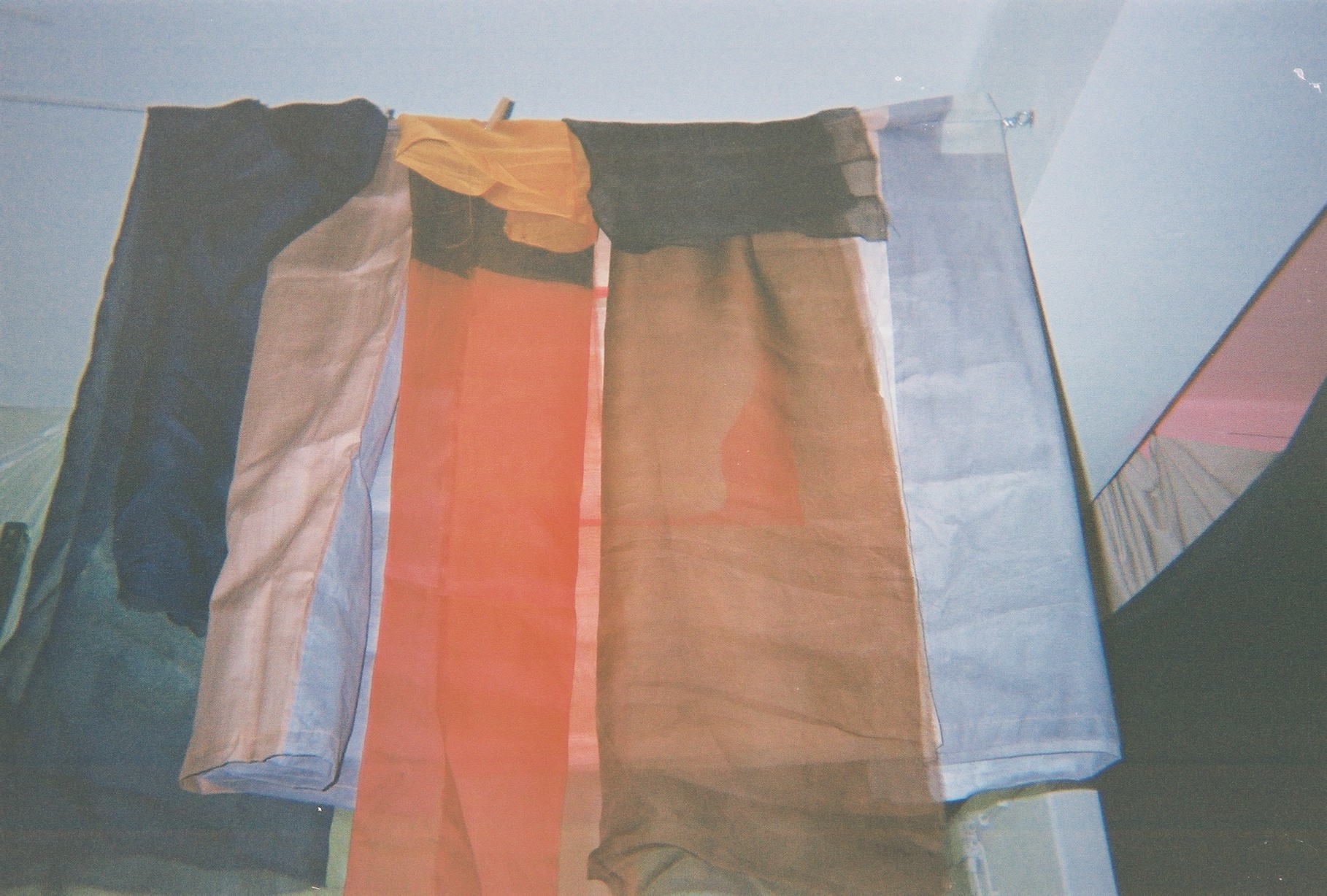









The history of weaving is long and complex. Despite limited evidence in archaeological records, the oldest known woven textiles date from around 10,000 BC. For thousands of years, weaving technology has allowed humans to stay warm or protect themselves from the sun, supporting them to travel into otherwise inhospitable territories. There are a few traces of woven fibres from the Neolithic period, hinting at a more sophisticated and softer society than we tend to imagine.

The use of woven cloth later became a way for people to mark their identities and to demonstrate their status in society. As technologies developed and international demand for cloth grew, weaving became a product of colonialism and industrialisation. During this uneasy period, a jacquard loom was invented which used punch cards to automate how the warp threads were lifted to create the pattern that is considered to be the ancestor of modern computing.
Weaving is the process of interlacing two sets of yarn top-to-bottom and right-to-left together to form a piece of cloth. The vertical threads are known as the warp, while the horizontal threads are called the weft. The fabric is produced on a loom, which separates the warp threads in order to let the weft yarn pass between them, looping under or over the warp according to the pattern. This is the system our neolithic ancestors used and is still the process by which most of the fabrics we use today are made.


Artist Fiona J Sperryn’s creative practice is driven by the process of weaving. Sperryn’s practice combines the research, sketching, and design stages of production with the technical processes of translating a design for the loom and of hand-weaving the final tapestry. Describing herself as an ‘artist-weaver-designer’, her weaves have been featured in major retail stores such as Calvin Klein, Marks and Spencer and Boden.
She invariably begins with drawing, often working outdoors in the Cornish landscapes surrounding her studio. Sketches of objects found on her walks are juxtaposed with pencil rubbings of surfaces from the more-than-human world. Through her observational way of working, Sperryn’s abstract and figurative pieces are influenced by local shapes, colours, and textures. She also uses imagery and subject matter derived from travel and research, as is evident in her series highlighting the plight of endangered creatures from around the world.


After scanning and digitising drawings and sketches, the design is finalised in Photoshop where Sperryn turns the image into areas of code denoting the weave structure. The grid-like patterns of black and white squares give her instructions on whether to lift or leave down the warp threads. The information related to each monochrome block is subsequently expanded through the artist’s choice of colours and yarns. Fibres in different hues vary in thickness, so Sperryn sometimes combines several strands in order to get a uniform texture across the tapestry.
The process of choosing thread colours and textures is similar to composing polyphonic music or painting with yarn. Unexpected harmonies and dissonances may appear in the finished work. Sperryn notes that there is also an element of chance at play, because even an experienced weaver can never perfectly predict how the threads will behave en masse.

Once the tapestry is coded and colours have been decided, Sperryn begins the complex procedure of bringing it to life on the loom. Her method involves a jacquard loom which uses vacuum suction to lift the warp thread needles, controlled by a foot pedal. Through the ability to apply intricate code patterns to the loom, jacquard offers a flexibility of mark-making which is not found in other types of weaving. Using the full width of the loom is a full-body endeavour, requiring the coordination of fingers and feet as well as the mental effort of checking the code.
Sperryn strives to test the limits of weaving with every tapestry she makes. By incorporating simple principles to hide and reveal yarns through raising and lowering warp threads, Sperryn creates sophisticated textiles that speak to formal questions of abstraction and figuration, as well as to the history and place of weaving in the arts. She uses sustainable yarns and avoids producing waste in her practice, therefore speaking to pressing contemporary issues such as environmental destruction and the relationship between human beings and the world.


Recently, the artist’s work has gone down a more colourful and abstract path, drawing inspiration from the light and sound patterns formed by standing in shallow water. The series was born in part from an experiment to use as many colours as possible within the same tapestry, and in part from a desire to travel after the limitations of the pandemic. Since her works appeal to the sense of touch as much as to the eye, Sperryn uses the tactile power of textiles to draw the viewer into her woven universe.
Sperryn is interested in how textile art is framed and positioned in the context of other fine art practices. As writers such as Roszika Parker have pointed out in her 1984 book The Subversive Stitch: Embroidery and the Making of the Feminine, textile art has long been considered inferior, with connotations of female domesticity and craft, in contrast to the masculine higher-ranking fine art mediums such as painting and sculpture, the dominant male discourse. Sperryn’s practice seeks to transform this decorative association through dexterously warping, coding and throwing the shuttles.


In the past, Sperryn perceived the textile and fine art areas of her creative output as separate entities, but today she has come to see them as part of an interconnected practice. Her use of the jacquard loom brings the fields of drawing, textile, pattern, digital creation, and design together, resulting in an ecosystem of making that forms a considered continuation of the long history of weaving. She utilises modern technology to perform an ancient craft, coding the fibres of the future.
10.06.2022
Words by Anna Souter
Related
Journal

MATER
Interview

